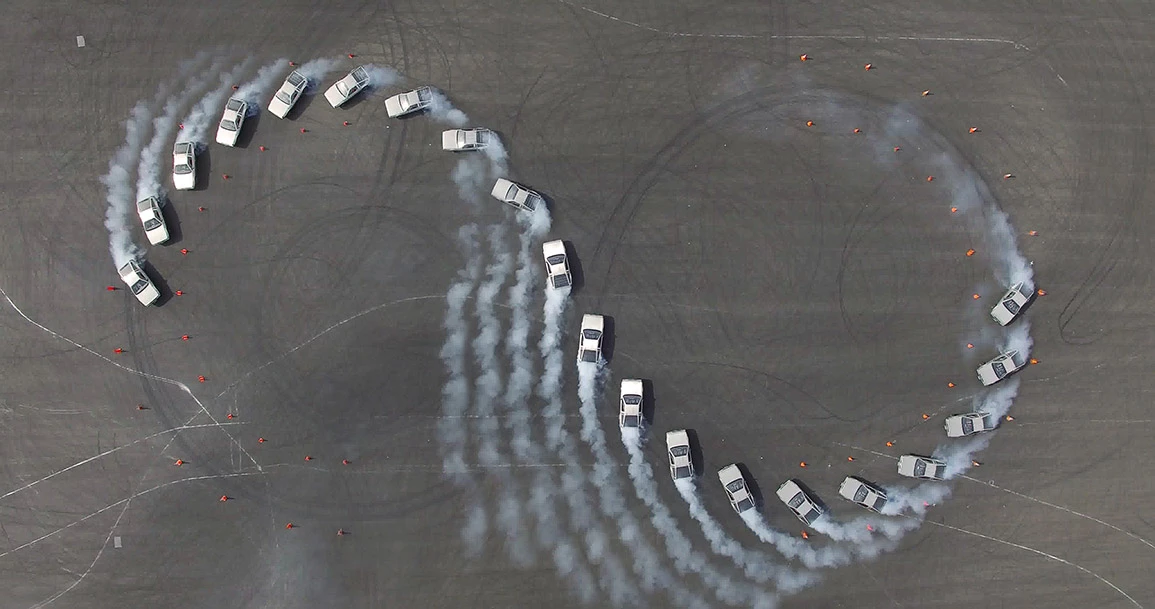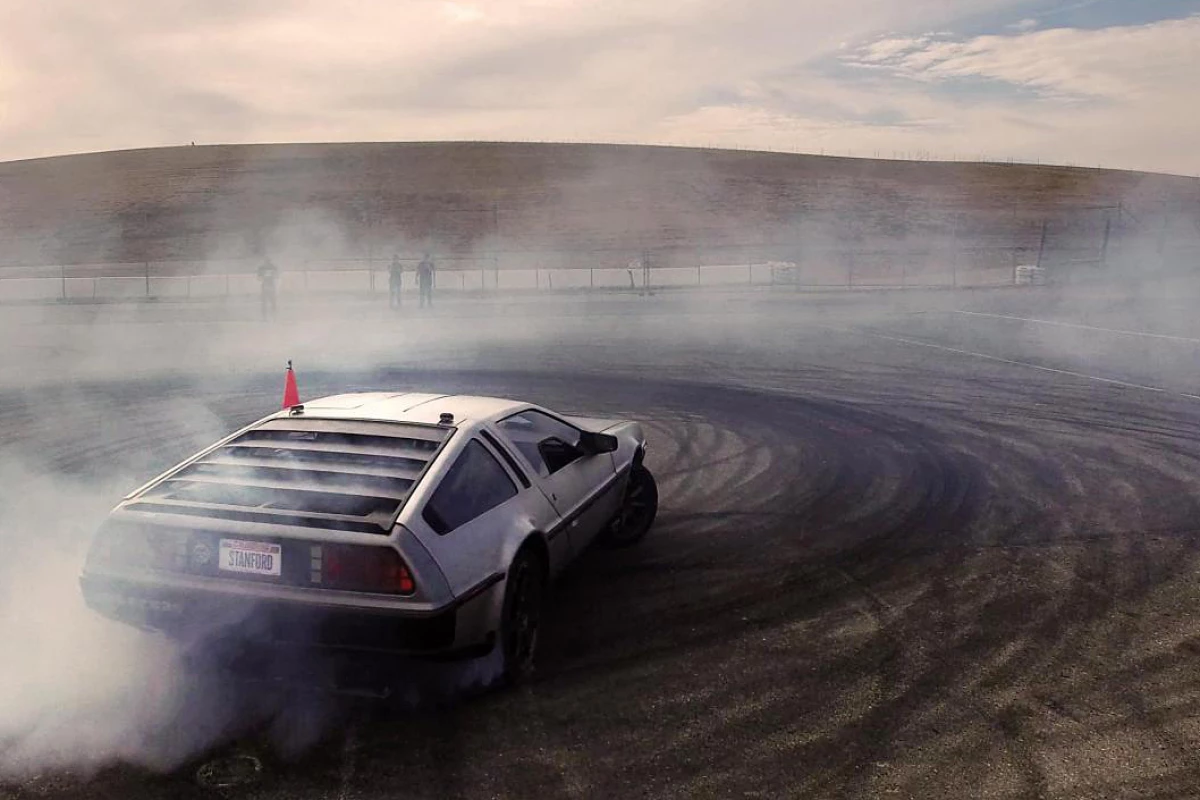When engineers at Stanford University first unveiled their autonomous drifting DeLorean back in 2015, they did so with plenty of future upgrades in mind. After a few years of tinkering, they have now equipped the car with some serious driving chops, sending it sideways around a kilometer-long drifting course all on its own.
The car goes by the name of Marty (Multiple Actuator Research Test bed for Yaw) and its likeness to the iconic DeLorean from Back to Future basically ends at the exterior. Inside, the team has packed electric motors delivering 7,000 Nm of torque to each of the rear wheels and computer-controlled braking, throttling and steering systems designed to send the car traveling predominantly in a sideways orientation.
Among the upgrades is a new set of GPS antennas on the roof that track the car’s position to within an inch, while the mechanical controls for steering, braking and throttling have been switched over to electronic systems. The suspension has also been overhauled, to make it less “squishy” and more effective at holding a decent drift.
Once the team had fed Marty the course layout, which consisted of a kilometer-long (0.62 mi) circuit made up of traffic cones at California’s Thunderhill Raceway, the onboard computers needed just a few seconds to calculate the optimal route. This involved adjusting the braking, steering and throttling to have the car wind itself around the course mostly while skidding sideways with a billow of smoke trailing behind. The precision of all this, and how close it comes to the traffic cones without taking them any of them out, is a sight to behold.

“The results so far are rather outstanding,” says mechanical engineer Chris Gerdes. “The stability control systems of modern cars limit the driver’s control to a very narrow range of the car’s potential. With Marty we have been able to more broadly define the range of conditions in which we can safely operate, and we have the ability to stabilize the car in these unstable conditions.”
The team says that Marty’s performance was on par with a human drift driver, and it is hard to argue after watching the video. But there’s more at play than some stunt work here. The end game for the research team is to advance the safety of autonomous driving systems by enabling them to handle tougher conditions and quickly take evasive action, such as avoiding a pedestrian that runs on to the road.

“We’re trying to develop automated vehicles that can handle emergency maneuvers or slippery surfaces like ice or snow,” Gerdes said. “We’d like to develop automated vehicles that can use all of the friction between the tire and the road to get the car out of harm’s way. We want the car to be able to avoid any accident that’s avoidable within the laws of physics.”
You can see Marty in action in the video below.
Source: Stanford University





